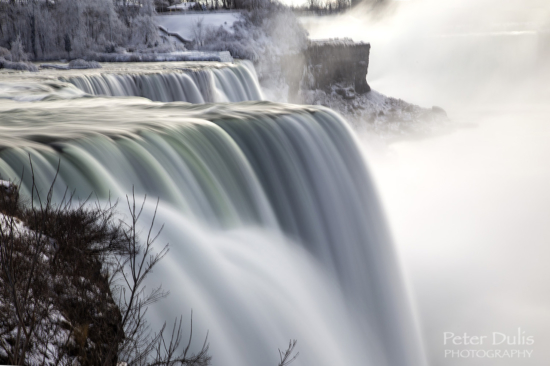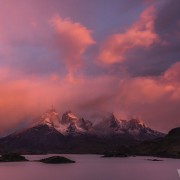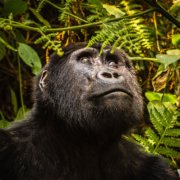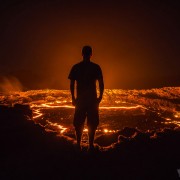Travel Photography Equipment Guide for Beginners
Every picture tells a story and I’m passionate about telling stories and sharing my travel experiences through my landscape and travel photography websites.
Quite often, people ask me about what kind of camera gear I use to capture my images. Back in the 1970s, I started out shooting with a simple Olympus film camera. I am a photographer that doesn’t rely on a lot of fancy technical gear. There’s a lot of people that think that if you don’t have the perfect camera, the latest gear, or the best accessories, then you’re not ready to be an effective travel photographer. But, it’s not the tools that make the photographer. Tools simply help you to bring your ideas to life. If it’s my iPhone that’s in my pocket when I see the perfect shot – then that’s what I shoot with.
Having had the privilege of working with Canon Canada for 14 years, I’ve had a chance to meet and work with some incredible photographers. Their stories and experiences have changed the way I look at things. I’ve also had the privilege of trying out a lot of different types of travel photography equipment. Listed below are some ideas I’d like to share.
Travel Photography Cameras
So, what makes the best camera for travel photography? This is a complicated and constantly-evolving question to answer, but it’s probably a camera that allows you to capture great quality images and doesn’t weigh a ton. Camera manufacturers are always changing their line-up with the latest and greatest features, but the things to look for in a good travel camera is image quality, long battery life, size and weight, simple to use, and that doesn’t cost a fortune. The most important thing about a travel camera is that it doesn’t get in your way of enjoying the adventure and at the same time delivers stunning images. The best travel camera for you is going to be very dependent on your needs and situation.
I’ve gone through a number of camera bodies throughout the years but, for now, have settled on the Canon EOS 6D full frame DSLR camera. I have investigated and tried mirrorless cameras, but because the weight wasn’t significantly less, I’ve stuck with what works for me and gets me great photos. The Canon 6D is one of the lightest weight DSLR cameras (1.7 pounds with the battery). The camera battery gives me decent life (if I’m not using GPS). The processor delivers enhanced noise reduction and exceptional processing speed, all in a compact body. Because if it’s compact size, it fits into my hand like a glove.
Camera Lenses for Travel Photography
Whilst it would be wonderful to have a large range of lenses to take with you on trips, the reality of travel is that you can only carry so much before you feel like a weighed down camel. It’s better to try and focus on getting a smaller number of lenses that work well in a wide variety of situations. I personally use three lenses 99% of the time. When we consider travel photography, we capture landscapes, portraits, street scenes, architecture, and so on — all of these subjects require different lenses to be properly framed.
So, lets look at a few lenses.
The “Do It All” Camera Lens
The 24-70mm lens or 24-105mm lens is enormously versatile. The 24-105mm lens is the one I use mostly because of its versatility. It gives me a wide-angle to nearly telephoto range and allows me to capture large landscapes, close-up portraits, and everything else in between without having to change lenses. It’s a good size and doesn’t weigh a lot.
My Canon EF 24–105mm F/4L is II USM camera lens is a great general-purpose lens and was a great value when I purchased it with my 6D DSLR kit. If I could only take one lens while I’m hiking or biking, this is the one. AT 24mm, it is especially valuable for landscape photography and for capturing images in tight places. The 105mm focal length on the long end is really useful for a wide range of subjects, including portraits.
The Ultra Wide Zoom Lens
The 16-35mm lens or something close to it is the ultimate go-to-lens for a travel photographer looking to capture landscapes, cityscapes, or even internal building spaces. Not all wide-angle lenses are the same, so you need to do a little research. You want to make sure it creates a sharp, beautiful images with little to no barrel distortion or fish-eye effect. Some lenses are better at this than others.
I love my Canon 16-35 F/4L IS wide angle lens and it has been popular with many landscape photographers. It’s an extremely sharp ultra-wide angle zoom lens, delivering prime-grade image sharpness right into full frame corners. A stellar-performing image stabilization system makes this lens a great lens. I can use it at the top of a windy mountain and shoot incredible quality, deep depth of field imagery without the use of a tripod. I had the Canon 11-24mm F/4L fisheye lens out in the field many times, but it was heavier and necessitated me carrying a larger camera bag.
The Telephoto Lens
Having a good quality telephoto lens in your travel kit is a big plus for landscape photography. Sometimes you just need that tighter close up shot to get more detailed photos. I would recommend a 70-200mm telephoto zoom lens because of its versatility. You can get a little longer, like a 100-400mm, but it adds weight and costs a lot more. The 70-200mm f/2.8L is what I use, but it’s also the heaviest lens in my kit.
I use Canon EF 70-200mm f/2.8L IS II USM telephoto lens for my travel photography. This lens gives me an impressive image quality and focuses accurately very fast. It has a 4-stop image stabilization, weather sealing, and has become one of my favorite and most-used lenses. I love the image stabilization on this lens which helps me to obtain sharp images even while I’m hand holding the camera.
So, for travel photography, it’s better to try and focus on getting a smaller number of lenses that work well in a wide variety of situations. That way, you are more likely to take them with you and use them.
Camera Bags for Travel Photography
There are a lot of camera bags on the market today and so many options to choose from. It can get a bit confusing trying to figure out which one is the best bag for travel photography. Unfortunately, there is no one-size-fits-all solution, so you must do your research. Being a travel photographer means you have to look at not only size; but also… do you need one that’s completely waterproof, crush proof, designed for climbing rocks as well as hiking? If you are swimming through the Zion Park Narrows – then that’s a completely different story.
The following are some questions to ask yourself:
- Do I want the bag to be multi-functional so it can act as both a camera bag and a day pack?
- Do I want to carry a laptop computer or tablet in the bag?
- Do I need a trolley strap included so you can attach it to rolling luggage?
Camera backpacks are one of the most popular options for carrying around your gear, but you may also consider a shoulder bag. Sling bags that have one strap offer quick and easy access to a camera. Holster cases are designed to be used with a camera and a single lens if you want a light-weight option for biking. Spending money on the right bag to protect your gear is cheaper in the long run. So which bag is the best bag for you?
I think it’s best to take your gear to the store and try out a bunch of camera bags – that’s what I did. So, here’s what I use:
- My Lowepro Classified 160 AW shoulder bag is great for one camera plus three lenses and goes with me everywhere. Plus, the bag is easy to store in overhead bins on a flight.
- The Alta Access 28X shoulder bag is what I pull out when I have a few extra lenses to haul around. The bag effortlessly carries a professional gear kit which consists of my Canon 6D DSLR, 4-5 lenses (up to 70-200mm), a flash, and a multitude of accessories. It also is no problem to store in overhead bins on a flight.
- I also use a Lowepro holster bag when I’m biking. It provides good protection in a small package for my camera and attached lens.
Other Useful Travel Photography Accessories
- I highly recommend carrying an lightweight carbon fiber photography tripod. I love my Sirui T-025SK carbon fiber travel tripod. It’s super light weight and folds up into a 12-inch length. It’s maybe not the sturdiest of tripods, but it’s so much easier to carry around when hiking and biking.
- I also carry a circular polarizer filter which helps to reduce reflections and glare by filtering out light that has become polarized due to reflection from a non-metallic surface. It cuts down on certain types of light in a way that can benefit your images.
- 6 to 10 Stop ND filters can be really useful for landscape photography when you want to slow down your shutter speed to capture creative landscape photos.
Not Just Camera Gear
Besides camera gear, it is also important for travel photographers to dress properly to handle cold and stormy weather. When I’m out and about and the temperatures start falling, there’s nothing better than a great winter jacket. I love my Eider Men’s Lillehammer III Jacket with underarm air vents in case it gets really hot. Good, waterproof hiking boots and thick wool socks are critical. I have owned a pair of Guardo boots for about one year and love them. They’re stylish, comfy, warm, and have a super grip on slippery surfaces. I find that if you don’t want to get sick, keep your head, chest, and feet warm. This merino wool t-shirt is top quality and offers great warmth.
Travel photography isn’t just about making photographs; it’s about choosing a life of curiosity, exploration, and wonder… immersing yourself in the world around you. If you want to be an effective travel photographer, it is important to carry the right photography equipment and know how to use it. I hope you find these tips useful to get your started. Do you have any questions? If so feel free to ask them in the comments below:

















